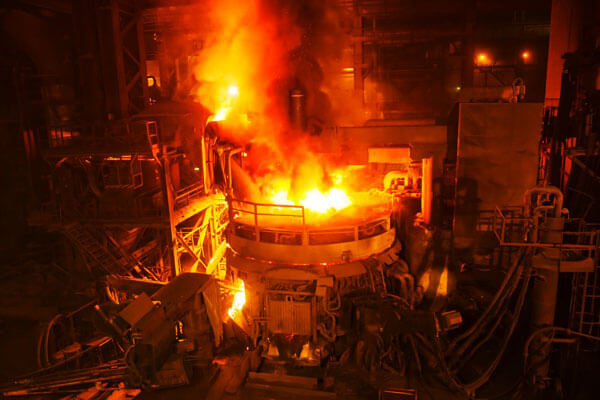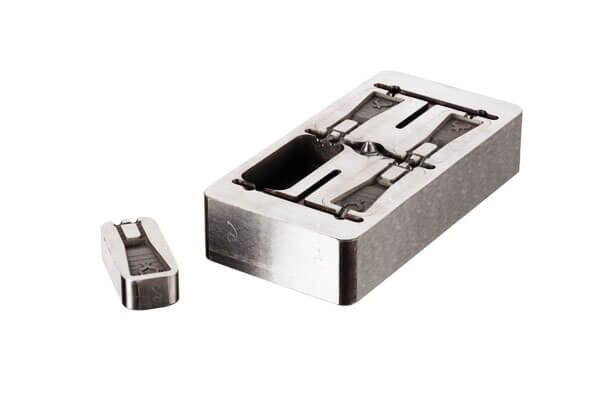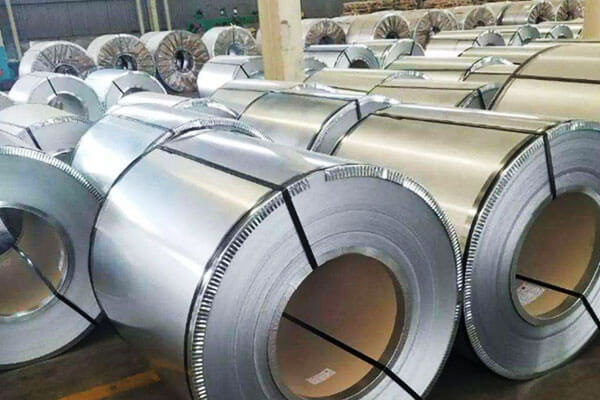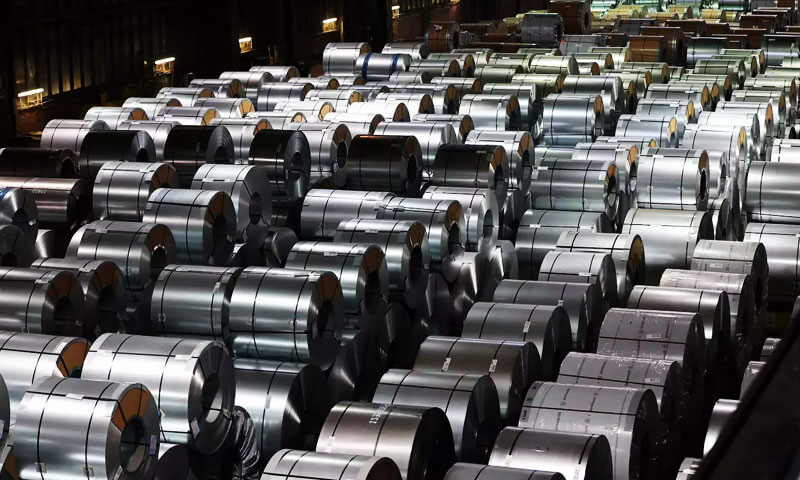Увођење
У 1889, at the Paris World Exposition, a towering steel structure stunned the world—the Eiffel Tower.
Composed of 18,038 wrought iron components, this engineering marvel not only symbolized the pinnacle of structural innovation but also marked humanity’s official entry into the Steel Age.
From the framework of skyscrapers to the intricate components of medical devices, steel has permeated every aspect of modern civilization with its irreplaceable role.
Beyond shaping industrial development, it has been a driving force behind global infrastructure expansion and technological progress.
This article delves into the scientific nature of steel, its manufacturing techniques, industrial evolution, и будући трендови,
revealing how this essential material continues to define the boundaries of human civilization.
1. A Historical Review of Steel
Human exploration of steel dates back to 1800 BCE in Anatolia, but the true industrial revolution began in the 19th century.
У 1856, Henry Bessemer invented the Bessemer converter, which increased steel production efficiency twentyfold,
directly accelerating the rapid development of railways, бродоградња, and mechanical engineering.
By the 20th century, the widespread adoption of continuous casting technology further improved production efficiency, Смањени материјални отпад, and enhanced product quality.
In the 21st century, the global steel industry has undergone significant transformation.
China has emerged as the dominant force, рачуноводство 53.9% of global crude steel production in 2023.
At the same time, tightening environmental regulations and carbon neutrality goals are pushing the industry toward low-carbon and intelligent manufacturing.
A review of steel’s development history shows that each technological breakthrough has dramatically expanded its applications,
allowing steel to penetrate beyond traditional construction into aerospace, Медицински уређаји, and renewable energy sectors.
2. Steel Manufacturing Processes
Modern steel production is a highly sophisticated industrial system that integrates material science, engineering precision, и одрживост животне средине.
Its core stages include raw material selection, smelting, рафинирање, и обликовање, as well as sustainable and circular economy practices.
Raw Materials & Вађење
The quality of iron ore, coking coal, and alloying elements determines the final properties of steel.
На пример, high-purity iron ore with a high Fe content significantly reduces impurities, enhancing mechanical strength and corrosion resistance.
Од 2024, global iron ore production has reached 2.2 billion tons, with resource distribution
and extraction costs playing a crucial role in shaping the competitive landscape of the steel industry.
Ironmaking & Steelmaking Processes
Modern steel production primarily relies on пећи за експлозију (BF), direct reduced iron (Дри), и basic oxygen furnaces (Бод).
DRI technology has become an essential method for green steel production, as it reduces carbon emissions by 30% compared to traditional blast furnaces.
Додатно, Електричне лучне пећи (Еаф), which utilize recycled scrap steel, имати increased their global production share to 28%,
significantly lowering energy consumption and contributing to a more sustainable production model.

Рафинирање & Обликовање
Once molten steel undergoes secondary refining, it is processed through continuous casting and rolling to produce high-precision materials
као што је ultra-thin stainless steel sheets и aerospace-grade high-strength steel.
Advanced cooling control techniques improve grain structure and fatigue resistance, making steel products more suitable for extreme environments.
Одрживост & Кружна економија
Steel recycling is a cornerstone of modern industry sustainability.
Every ton of recycled steels prevents the emission of approximately 1.5 tons of CO₂, significantly reducing the industry’s carbon footprint.
Currently, тхе global steel recycling rate has reached 85%, reinforcing the transition toward greener and more efficient steel production.
3. Classifying Steel: Types and Their Unique Characteristics
Steel stands as one of the most versatile materials in modern engineering, and its endless adaptability stems from the precise control over its chemical composition.
By varying the carbon content and adding different alloying elements, manufacturers create steels with unique properties tailored for specific applications.
угљенични челик
Карбонски челик serves as the foundation for countless applications due to its balance of strength and ductility.
Its properties primarily depend on the carbon content, which typically ranges from 0.05% до 2.0%.

Челик са ниским угљеником (Благи челик):
- Карактеристике: Contains less than 0.3% угљеник, making it highly malleable, easy to form, and weldable.
- Апликације: Used extensively in automotive bodies, Структурне греде, and consumer goods where high strength is not the primary concern.
- Податковна тачка: Low-carbon steel often exhibits a yield strength of around 250–350 MPa,
making it ideal for applications where moderate strength and excellent formability are required.
Стрибни карбонски челик:
- Карактеристике: With carbon content between 0.3% и 0.6%, this steel offers an enhanced strength profile and improved wear resistance, although its ductility decreases.
- Апликације: Often used for automotive components like gears and shafts, as well as in the manufacture of railway tracks.
- Податковна тачка: Typical tensile strengths range from 400–600 MPa, providing a balance between strength and ductility.
Стеел високог угљеника:
- Карактеристике: Contains between 0.6% и 2.0% угљеник, resulting in increased hardness and wear resistance, though it sacrifices ductility.
- Апликације: Ideal for cutting tools, опруга, и жице велике чврстоће, where durability under stress is critical.
- Податковна тачка: High-carbon steels can achieve tensile strengths over 800 MPa after appropriate heat treatment, making them perfect for heavy-duty applications.
Легура челика
Легирани челик enhances the basic properties of carbon steel by adding elements such as manganese, хром, никл, и молибден.
This customization allows for tailored performance attributes like improved toughness, отпорност на топлоту, и отпорност на корозију.

Челик са ниским легуром:
- Карактеристике: Typically includes small percentages (до 5%) of alloying elements that boost strength without a significant loss in ductility.
- Апликације: Користи се у структурним апликацијама, цевоводи, and automotive parts where high strength and moderate toughness are necessary.
Стеел високог легура:
- Карактеристике: Incorporates a higher proportion of alloying elements to deliver superior performance,
including enhanced wear resistance and the ability to withstand extreme temperatures. - Апликације: Common in the aerospace and power generation sectors, where materials must endure harsh environments.
- Податковна тачка: Certain high-alloy steels exhibit yield strengths exceeding 600 MPa and are engineered to resist deformation even at temperatures above 600°C.
нерђајући челик
Нехрђајући челик distinguishes itself by its excellent corrosion resistance, achieved by incorporating at least 10.5% chromium into the alloy.
The chromium forms a passive layer of chromium oxide on the surface, protecting the material from rust and environmental degradation.

Аустенитни од нехрђајућег челика:
- Карактеристике: Неагнетнички, Високо отпоран на корозију, and noted for its excellent formability and weldability.
- Апликације: Widely used in kitchen appliances, chemical processing equipment, и медицински уређаји.
- Податковна тачка: Оцене попут 304 и 316 stainless steel frequently demonstrate a tensile strength in the range of 500–750 MPa,
combined with outstanding corrosion resistance in diverse environments.
Мартензитни од нехрђајућег челика:
- Карактеристике: Offers higher hardness and strength compared to austenitic types, though it is less corrosion-resistant and more difficult to weld.
- Апликације: Commonly found in cutting tools, Хируршки инструменти, and high-wear environments.
- Податковна тачка: Typical hardness values can reach up to 600 ХРЦ након топлотног третмана, making them suitable for high-performance applications.
Феритни од нехрђајућег челика:
- Карактеристике: Magnetic and less ductile than austenitic stainless steel but offers good resistance to stress corrosion cracking.
- Апликације: Utilized in automotive exhaust systems and industrial equipment that requires moderate strength with good corrosion resistance.
Дуплек нерђајући челик:
- Карактеристике: Combines the best of austenitic and ferritic stainless steels, offering high strength and improved resistance to corrosion and stress corrosion cracking.
- Апликације: Ideal for chemical processing, Оффсхоре структуре, and marine applications.
- Податковна тачка: Duplex steels often boast yield strengths between 550–750 MPa, significantly outperforming many austenitic steels in terms of strength.
Tool and High-Speed Steels
Челици алата и челици велике брзине are specialized alloys designed for the manufacture of cutting tools, умире, и калупи.
They require exceptional hardness, отпорност на хабање, and the ability to retain strength at high temperatures.

Тоол Стеел:
- Карактеристике: Formulated with tungsten, молибден, ванадијум, and cobalt, these steels excel in hardness and durability under extreme conditions.
- Апликације: Employed in the production of hand tools, умире, and other precision tooling required for high-pressure applications.
- Податковна тачка: Some tool steels achieve hardness levels exceeding 65 ХРЦ, making them capable of enduring prolonged use without significant wear.
Брзи челик (ХСС):
- Карактеристике: Known for its ability to maintain hardness even at high temperatures, HSS is critical for high-speed machining and cutting applications.
- Апликације: Frequently used in drill bits, end mills, and other cutting tools in manufacturing processes.
- Податковна тачка: High-speed steels typically sustain operating temperatures up to 600°C while retaining their cutting performance, thereby increasing production efficiency.
4. Unpacking Steel’s Physical and Mechanical Properties
У овом одељку, we break down the essential physical and mechanical properties of steel, highlighting how these characteristics drive its diverse applications.
Физичка својства
Density and Weight
- Steels boasts a density of approximately 7.85 Г / цм³, which strikes an excellent balance between robustness and manageability.
This optimal density enables engineers to design structures that support heavy loads without incurring excessive weight. - На пример, when constructing bridges or high-rise buildings, steel’s density allows for significant load-bearing capacity while maintaining structural efficiency.
Melting Point and Thermal Stability
- With a melting point that typically ranges between 1,370°C and 1,510°C, steel withstands extreme temperatures with ease.
This high melting point ensures that steels components remain stable even in high-heat environments such as turbine engines or industrial furnaces. - Штавише, the thermal stability of steel is critical in applications like automotive components and power plants, where consistent performance under heat is essential.
Топлотна проводљивост
- Steel generally exhibits a thermal conductivity around 50 В / м · к, which allows it to effectively transfer heat.
This property makes steel an ideal choice for applications that demand efficient heat dissipation, such as heat exchangers and engine parts. - Додатно, effective thermal conductivity helps minimize hotspots during high-speed machining and industrial processing.
Коефицијент топлотне експанзије
- Steel’s coefficient of thermal expansion, приближно 11-13 μм / м · ° Ц, ensures that it maintains dimensional stability under varying temperature conditions.
This stability is particularly important in precision engineering and construction, where even minor distortions can compromise structural integrity.
Магнетна својства
- Steel’s inherent ferromagnetic properties allow it to be easily magnetized.
This attribute proves invaluable in the design of electric motors, трансформатори, and various electronic components, where controlled magnetic behavior is essential.
Механичка својства
Снага затезања и приноса
- Steel stands out for its impressive tensile strength, which can range from 400 MPa to over 800 MPa after advanced heat treatments.
This strength enables steels to support massive loads, making it indispensable in large-scale construction and heavy machinery. - Надаље, the yield strength, обично између 250 МПА и 350 MPa for common structural steels,
ensures that steel components resist permanent deformation under high stress.
High-strength alloys may even surpass 500 МПА, meeting the rigorous demands of aerospace and automotive applications.
Дуктилност и жилавост
- Steel’s ability to deform under tensile stress without fracturing – known as ductility – proves vital in absorbing energy during impacts.
На пример, advanced high-strength steels in automotive frames can absorb impact energies up to 120 kJ/cm³, thereby enhancing passenger safety. - Додатно, toughness—the capacity to withstand shock and vibration—ensures that steels can endure repetitive stress cycles,
which is critical for applications in bridges, железнице, и машинерије.
Отпорност на умор
- The cyclic loading that many structures endure requires materials that can resist fatigue over time.
Steel’s excellent fatigue resistance guarantees that components such as beams and vehicle frames remain reliable even under constant load fluctuations,
thus extending the lifespan of critical infrastructure.
Тврдоћа и отпорност на хабање
- Steel’s hardness can be significantly enhanced through alloying and heat treatment processes, resulting in improved wear resistance.
This property is crucial for applications such as cutting tools, зупчаници, и лежајеви, where prolonged exposure to friction and stress demands a material that maintains its integrity over time. - Advanced heat treatments and alloying techniques enable certain steels to achieve hardness levels
that not only resist abrasion but also optimize performance in high-speed industrial processes.
Interplay of Properties and Their Impact
Synergistic Strength and Ductility
- The unique combination of high tensile strength and substantial ductility makes steels both robust and flexible.
This synergy allows it to support significant loads while absorbing shocks, which is critical in structures like skyscrapers and bridges.
Optimized Through Alloying and Heat Treatments
- Manufacturers continuously refine steel by adjusting carbon content and adding elements such as chromium, никл, и манган.
These enhancements lead to ultra-high-strength steels that can exceed 1 GPa in tensile strength while maintaining enough ductility to withstand dynamic stresses. - Надаље, ongoing advancements in heat treatment processes have improved fatigue resistance and overall performance,
ensuring that steels remains at the forefront of engineering materials.
Thermal and Mechanical Synergy
- Steel’s ability to efficiently transfer heat complements its mechanical robustness, enabling it to perform reliably under harsh conditions.
This thermal-mechanical interplay proves essential in applications where materials
must endure both high temperatures and significant mechanical stress, such as in aerospace engines and industrial boilers.
5. Processing and Manufacturing of Steel
The continuous advancement of steel processing technology has significantly enhanced the added value of steel products, enabling higher performance, издржљивост, и ефикасност.
Топлотни третман: Enhancing Strength and Durability
Heat treatment processes play a critical role in modifying the microstructure of steels to optimize their mechanical properties,
попут тврдоће, жилавост, и отпорност на хабање. Common techniques include:
- Враголовање – Reduces internal stress, improves machinability, и побољшава дуктилност.
- Нормализација – Refines grain structure and improves mechanical strength.
- Гашење – Rapid cooling increases hardness and wear resistance.
- Ублажавање – Adjusts toughness and reduces brittleness after quenching.
На пример, laser quenching technology can increase the surface hardness of gears to HRC60, reducing the wear rate by 70%,
thereby extending service life in high-load applications such as automotive transmissions and industrial machinery.
Хладна обрада: Improving Precision and Surface Quality
Cold processing methods refine the dimensions and surface finish of steel components, offering superior accuracy and enhanced mechanical properties. Key techniques include:
- Хладно котрљање – Increases strength and surface finish, commonly used in automotive panels and precision components.
- Cold Drawing – Improves dimensional accuracy and tensile strength, essential for producing fine steel wires and tubing.
- Cold Extrusion – Enhances uniformity and mechanical properties, often used in manufacturing fasteners and structural parts.
Са 5-axis CNC machining, the precision of turbine blade manufacturing can be controlled within ± 0,005мм,
ensuring optimal aerodynamic efficiency in aerospace and power generation industries.
Површински третман: Enhancing Corrosion Resistance and Aesthetic Appeal
Surface treatments provide protective layers that extend the lifespan of steel products, improve wear resistance, and enhance visual appeal. Advanced surface treatment methods include:

- Поцинљив – Zinc coating protects steel from rust and oxidation.
- Хромирање – Increases hardness and provides a sleek, Корозијски финиш отпоран на корозију.
- Фосфатинг – Forms a protective layer that enhances paint adhesion and corrosion resistance.
Значајно, nano-galvanizing technology has revolutionized corrosion protection by extending the anti-corrosion cycle to 50 године while simultaneously reducing zinc consumption by 60%,
making it an environmentally sustainable solution for infrastructure and marine applications.
Welding Technology: Achieving Strong and Reliable Joints
Steel structures often require advanced заваривање techniques to ensure durability and load-bearing capacity.
The choice of welding method depends on factors such as material composition, joint design, и захтеви за пријаву. Common welding techniques include:
- Лук заваривање – Versatile and widely used in structural steel fabrication.
- Ласерско заваривање – Provides high precision with minimal heat distortion, suitable for aerospace and medical components.
- Заваривање електрона – Ideal for high-strength joints in vacuum environments, commonly used in aerospace and nuclear industries.
Иновације у automated robotic welding и заваривање трења (Фсв) have further improved joint integrity and manufacturing efficiency,
making complex assemblies more reliable and cost-effective.
Прецизна производња: Achieving Unprecedented Accuracy
Precision manufacturing is crucial in industries that require high-performance steel components with tight tolerances.
The development of advanced machining technologies has revolutionized the manufacturing of complex steel parts. Key techniques include:
- ЦНЦ обрада Centers – Enable high-speed, high-precision cutting and shaping.
- Вире ЕДМ (Електрична обрада пражњења) – Allows for ultra-fine cutting of intricate steels components.
- ЕДМ (Електрична обрада пражњења) – Enhances precision in hard-to-machine steel alloys.
These cutting-edge technologies have led to unprecedented improvements in the quality and performance of steels products,
enabling their widespread application in aerospace, Медицински имплантати, and high-performance engineering.
6. The Global Impact and Applications of Steel
Steel’s influence spans multiple industries, each benefiting from its unique properties:
- Изградња и инфраструктура: Steel forms the backbone of modern urban landscapes.
Structural steel supports skyscrapers, мостови, and railways, while reinforcing bars (rebar) provide essential strength to concrete structures.
На пример, the Hong Kong-Zhuhai-Macau Bridge utilized 2 million tons of steel, ensuring a lifespan exceeding 120 years under harsh marine conditions. - Automotive and Aerospace: High-strength steel alloys ensure vehicle safety and fuel efficiency.
У ваздухопловству, steel contributes to lightweight, durable airframes and engine components that withstand extreme temperatures and pressures. - Manufacturing and Industrial Equipment: From machine tools to heavy-duty industrial machinery, steel’s robustness and versatility make it indispensable.
Its use in precision equipment has transformed production efficiency across the globe. - Consumer and Medical Products: Stainless steel’s corrosion resistance and biocompatibility make it ideal for kitchen appliances, Медицински имплантати, и хируршки инструменти.
Advanced alloys such as 316LVM provide superior performance in demanding healthcare applications.
7. Current State of the Steel Industry: Свеобухватна анализа
The steel industry is at a turning point, balancing technological progress with sustainability goals while adapting to shifting economic and geopolitical landscapes.
Global Market Overview: The Push for Carbon-Neutral Steel
Countries worldwide are investing in environmentally friendly steelmaking processes.
Sweden’s hydrogen metallurgical test furnace is now operational, targeting zero carbon emissions by 2030.
У међувремену, leading producers are implementing low-emission production techniques to meet stringent global regulations.
Supply Chain Management: Ensuring Stability and Efficiency
Raw material availability, logistics, and international trade policies remain critical factors affecting steel production.
Companies are adopting smart supply chain solutions to enhance stability and efficiency.
На пример, Anshan Iron and Steel’s smart factory, utilizing full-process AI, has achieved a 99.7% defect detection rate, significantly improving production accuracy and reducing waste.
Technological Innovation: The Evolution of High-Performance Steel
Cutting-edge developments are redefining the steel industry:
- Smart factories – AI-driven systems enable real-time monitoring and optimization of production.
- Лагана, Челичице велике чврстоће – Essential for the automotive and aerospace сектор, reducing fuel consumption and improving safety.
- Nanocrystalline steel – While offering strengths above 2 ГПА, it is still in early-stage development,
with production costs 40% lower than titanium alloys but facing challenges in large-scale industrial applications.
Climate Change Strategies: Industry-wide Decarbonization Efforts
The steel industry is taking proactive measures to reduce emissions:
- China’s commitment – Plans to lower carbon emission intensity by 18% by 2030 through advanced CCUS and energy-efficient processes.
- Electrification and alternative fuels – The adoption of hydrogen-based steelmaking and expansion of Електрична лучна пећ (Еаф) производња are key to achieving net-zero emissions.
8. Future Trends and Challenges in the Steel Industry
As the steel industry evolves to meet global demand, sustainability goals, and technological advancements, it faces both transformative opportunities and significant challenges.
The sector navigates a landscape shaped by innovation, environmental policies, and shifting economic conditions.
Technological Innovation: Smart Manufacturing and High-Performance Materials
Интеграција аутоматизација, вештачка интелигенција (Аи), and smart factories is reshaping steel production.
AI-driven systems optimize production efficiency, смањити отпад, and enhance quality control.
Пораст nanocrystalline steel, boasting strengths exceeding 2 ГПА, is revolutionizing high-performance applications,
potentially rivaling titanium alloys in aerospace and advanced engineering.
У међувремену, breakthroughs in 3D printing of steel allow for complex, lightweight designs with superior mechanical properties.
Иницијативе одрживости: Decarbonization and Green Production
In response to climate change and carbon reduction targets, the steel industry is actively adopting cleaner production technologies. Key sustainability trends include:
- Hydrogen-based steelmaking – Countries like Sweden are pioneering hydrogen metallurgy, aiming for carbon-neutral steel by 2030.
- Carbon capture, utilization, and storage (CCUS) – China’s steels sector aims to cut carbon intensity by 18% by 2030, leveraging carbon capture and recycling technologies.
- Electric arc furnaces (EAFs) – Growing reliance on EAFs, which recycle scrap steel, reduces energy consumption and emissions compared to traditional blast furnaces.
Competitive Material Landscape: The Challenge of Alternatives
Steel faces competition from emerging materials such as композити, Алуминијумске легуре, and nanomaterials, Посебно у аутомобилској и ваздухопловној индустрији.
Међутим, steel’s cost-effectiveness, издржљивост, and recyclability continue to make it the backbone of industrial manufacturing.
Иновације у висока чврстоћа, lightweight steels are further enhancing its adaptability in structural applications.
Global Market Dynamics: Trade Policies and Economic Shifts
The steel industry is deeply influenced by geopolitical factors, trade regulations, and economic trends:
- Supply chain disruptions – Fluctuating raw material prices and political trade barriers impact global steels production.
- Regional growth – Rapid industrialization in Southeast Asia and Africa is driving increased steel consumption.
- Strategic alliances – Steels producers are forming global partnerships to enhance resource efficiency and market expansion.
9. Закључак
Steel not only transformed the physical landscape—from the Eiffel Tower to modern urban skylines—but also reshaped human progress itself.
As the world transitions toward more sustainable and innovative manufacturing processes,
steel continues to evolve, driven by advancements in technology and a relentless commitment to excellence.
Its journey from ancient iron production to modern smart factories encapsulates the spirit of industrial innovation and human ingenuity.
Ако тражите висококвалитетне челичне или челичне производе, одабир Лангхе је савршена одлука за ваше производне потребе.


